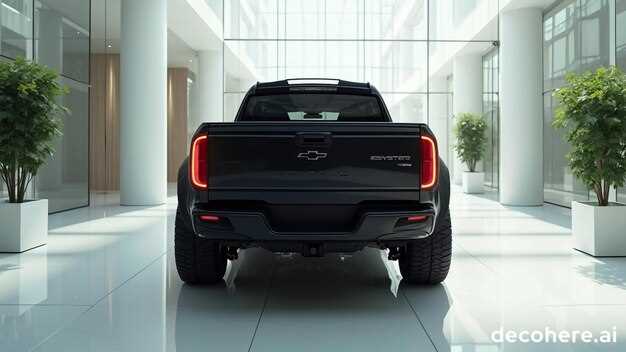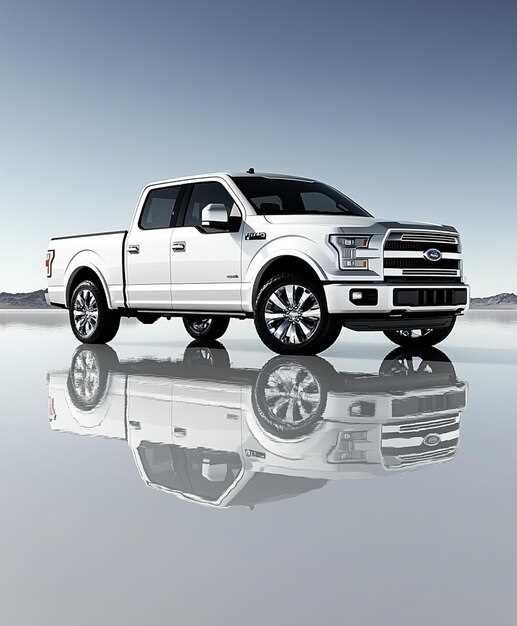
The year 2025 marks a new era for two of the most iconic names in the pickup truck segment: the Ford F-150 and the Chevrolet Silverado. Both models have a rich history of performance, capability, and innovation, and the latest iterations are no exception. As consumers seek vehicles that not only deliver on utility but also incorporate cutting-edge technology and design, a head-to-head comparison becomes essential for making informed purchasing decisions.
In this article, we will delve into various aspects of the F-150 and Silverado, examining their key features, performance metrics, and overall value propositions. From towing capacities and engine options to interior comforts and advanced safety systems, each truck brings unique strengths to the table. Our analysis aims to highlight the advantages and disadvantages of both models, providing potential buyers with a comprehensive understanding of what they can expect in the 2025 marketplace.
As we progress through the comparison, we will also consider consumer feedback and industry expert opinions to give a well-rounded perspective. Whether you’re a truck enthusiast, a tradesperson, or someone simply in need of a reliable vehicle, understanding the differences between the Ford F-150 and Chevrolet Silverado is crucial in guiding your next purchase.
Performance Specifications: Towing and Payload Capacities

The 2025 Ford F-150 and Chevrolet Silverado have established themselves as leaders in the pickup truck segment, particularly when it comes to performance specifications such as towing and payload capacities. Both vehicles are designed to meet the demands of both casual users and professionals requiring heavy-duty performance.
The 2025 Ford F-150 boasts impressive towing capabilities, with maximum ratings reaching up to 14,000 pounds when properly equipped. This makes it an excellent choice for those needing to trailer larger loads, whether for work or recreation. The payload capacity of the F-150 can also be remarkable, with some configurations offering up to 3,325 pounds, allowing for significant cargo transport without compromising performance.
On the other hand, the 2025 Chevrolet Silverado is engineered to rival these numbers. The Silverado’s towing capacity can reach an impressive 13,300 pounds across its various configurations. This allows users to efficiently manage a wide range of tasks, from hauling trailers to moving heavy equipment. In terms of payload, the Silverado can support up to 2,280 pounds, making it a robust option for those who prioritize hauling capability.
In summary, both the Ford F-150 and Chevrolet Silverado provide excellent performance specifications in terms of towing and payload capacities. However, those who need the highest towing limits may lean more towards the F-150, while the Silverado offers competitive figures that make it a formidable challenger in the truck market. Choosing between them ultimately depends on individual needs and preferences regarding heavy-duty performance.
Technology Features: Infotainment and Safety Innovations

The 2025 Ford F-150 and Chevrolet Silverado are both equipped with advanced technology features that enhance driving experience, safety, and connectivity. The infotainment systems in both trucks represent a leap forward, with intuitive interfaces and a multitude of applications designed to keep drivers informed and entertained.
The Ford F-150 features the latest version of Ford’s SYNC system, which is known for its user-friendly touchscreen and responsive voice commands. The system integrates seamlessly with smartphones through Apple CarPlay and Android Auto, allowing for easy access to apps and navigation. In contrast, the Chevrolet Silverado is equipped with the updated Chevrolet Infotainment 3 system, which boasts a customizable home screen and improved performance. Users can expect smooth connectivity options and a host of apps for a more personalized experience.
When it comes to safety innovations, both trucks offer an array of advanced driver-assistance systems. The Ford F-150 comes equipped with Ford Co-Pilot360, which includes features like adaptive cruise control, lane-keeping assist, and pre-collision assist with automatic emergency braking. The Silverado, on the other hand, offers Chevrolet’s advanced safety suite that includes similar technologies but emphasizes its available Super Cruise feature, allowing for hands-free driving on compatible highways.
Additionally, both vehicles prioritize driver visibility and awareness. The F-150 includes features such as a 360-degree camera system and blind-spot monitoring, enhancing safety during maneuvering. Meanwhile, the Silverado showcases its HD Surround Vision technology, providing a comprehensive view around the vehicle, making it easier for drivers to navigate tight spaces.
In summary, both the 2025 Ford F-150 and Chevrolet Silverado provide cutting-edge technology and safety features designed to meet the needs of modern truck owners. Their respective infotainment systems and safety innovations ensure that drivers remain connected and secure, setting a high standard in the pickup truck market.
Pricing and Trim Models: Cost Analysis for Buyers
When comparing the 2025 Ford F-150 and Chevrolet Silverado, understanding the pricing and trim models is essential for informed purchasing decisions. Both trucks offer a variety of trims that cater to different preferences and budgets.
The Ford F-150 lineup begins with the base XL trim, which provides essential features at an attractive entry-level price. Moving up, the XLT trim adds more conveniences such as advanced infotainment and enhanced comfort. For those desiring a more luxurious experience, the Lariat and Platinum trims come equipped with premium materials, technology, and performance enhancements. At the top of the range, the Limited trim features cutting-edge options and exclusive design elements, making it a premium choice for buyers seeking the ultimate F-150 experience.
Pricing for the F-150 varies significantly based on the chosen trim and optional packages, with a base starting price that is competitive within the full-size truck segment. As you ascend the trims, expect to see incremental increases that reflect the additional features and capabilities offered.
In contrast, the Chevrolet Silverado also starts with a base Work Truck (WT) trim that serves as a solid foundation for cost-conscious buyers. The Custom and LT trims add more desirable features and technology, while the LTZ and High Country trims offer luxury appointments suitable for more discerning customers. Similar to the F-150, the Silverado’s pricing structure reflects the value of enhancements as one moves up the trim hierarchy.
Buyers must consider not only the initial purchase price but also the potential long-term costs associated with maintenance, fuel efficiency, and insurance. Both models generally hold their value well, but specific trims might offer better resale potential depending on market demand.
In conclusion, the Ford F-150 and Chevrolet Silverado of 2025 present a range of pricing and trim options that can accommodate various buyer needs. Understanding these factors will enable consumers to choose a model that aligns with their budget and desired features.




